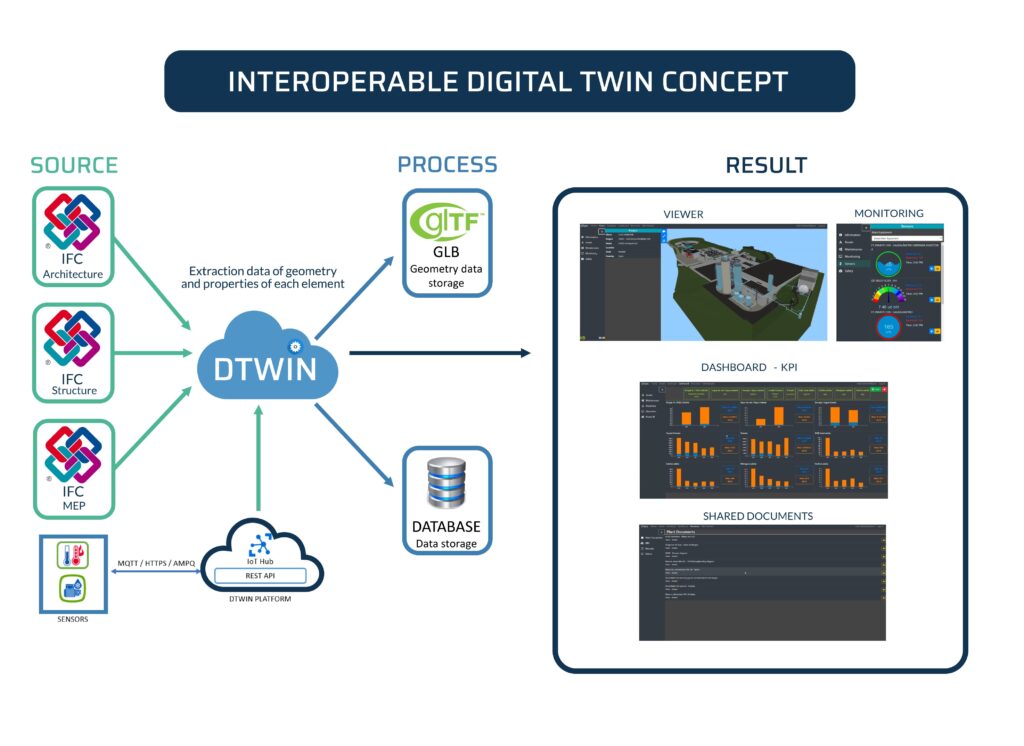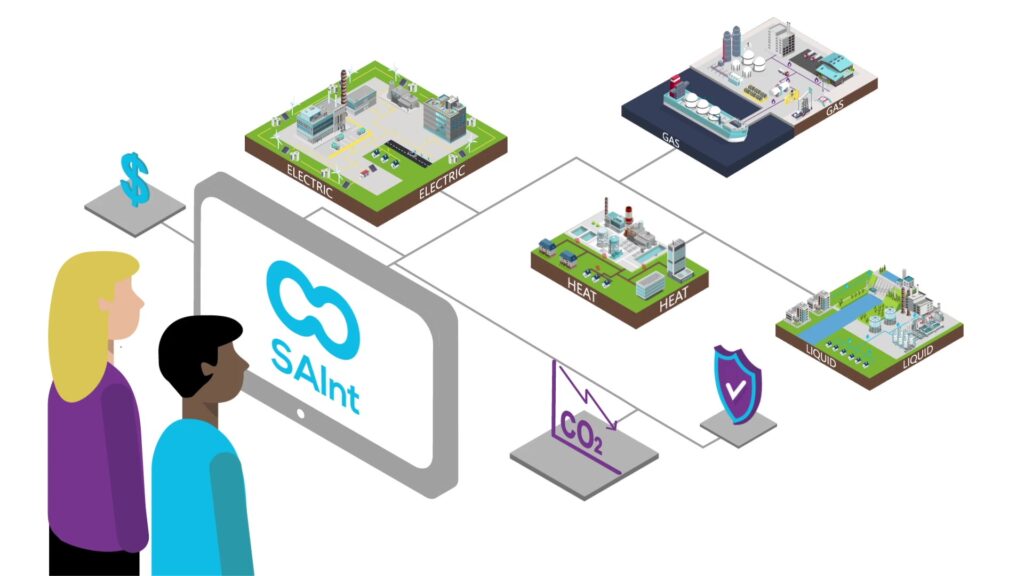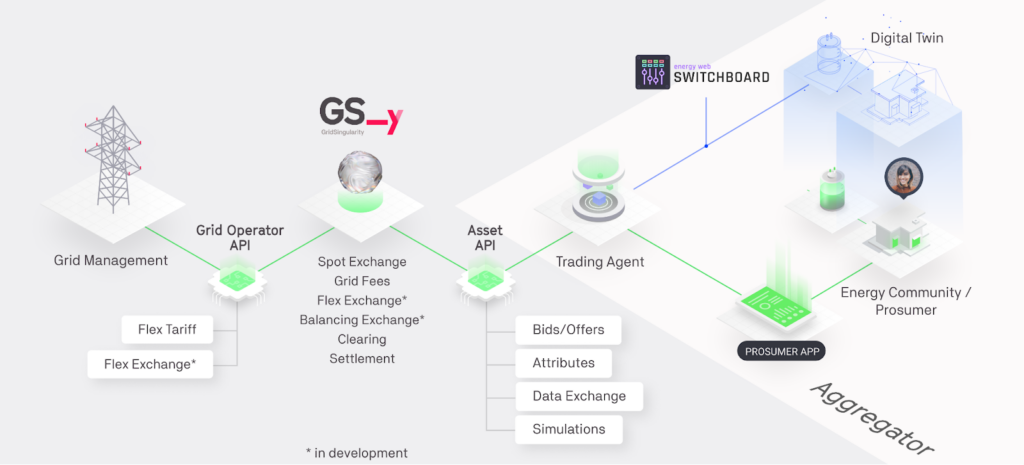Tools
Layer 2 – HYPERGRYD Smart Tools
HYPERGRYD is developing innovative tools for RES-enabled district heating and cooling planning and optimization for the effective improvement of planning solutions and increased RES share in 4th and 5th generations DHC.

Key Enabling Tool 1 - Interoperable Digital Twin for DHC asset and monitoring data management
A novel Building Information Modeling (BIM) methodology will be developed and exploited, to improve the interoperability with other formats and software tools (used by the end-user) and include it together with all other required relevant data in a common database in an open BIM format.
Innovations
- BIM methodology integrated with GIS tools. Stakeholders engagement will be part of the process to make sure the tool will actually represent the next step towards Smart Hybrid Grids management.
- IDM (Information Delivery Manual) for exergoeconomic models, analysis and simulations for RES enabled hybrid systems for DHC, which will allow a seamless export of relevant data between BIM-GIS tools and the exergoeconomic mathematical simulation tools.
Key Enabling Tool 2 - GIS-BIM compatible DHC network piping and configuration planning
The aim of this tool is to provide decision support, and generate optimized network layouts and dimensioning parameters, for the infrastructure planning of the next generation district heating networks. It will be applicable to the planning of both new and existing networks. Based on the Digital Twin tool (Key Enabling Tool 1), the generated network layouts will be easily visualized together with other infrastructure and geography. Moreover, GIS will be used to ensure that the network layout satisfies spatial (geographical) constraints. The user will be able to choose and prioritize between different parameters to be optimized.
Innovations
- Integration of models of user profiles typical of existing and next generation DHC. The technologies described in Layer 1 will be integrated through the realisation of BIM models and the implementation of the characteristic curves. At the same time, typical components of the 4th/5th DHC grids will be introduced in the BIM platform, such as CO2 heat pumps and waste heat sources.
- Supporting the transition from DHC to Smart Hybrid Grids. This tool will be further enhanced to handle heterogeneous thermal loads (e.g., preferring different supply/return temperatures), and bi-directional energy exchange (low exergy heat, distributed producers, renewable and waste energy sources). The generated layouts and parameters can be further validated and tested in-depth in the other simulation tools developed in HYPERGRYD.
Key Enabling Tool 3 - Exergoeconomic optimization tool for 4th and 5th generation of DHC
This tool will be used for exergy-based analysis and assessment, which combines exergy and economics for exergy-aided cost minimization, for detecting the interactions among components of energy-conversion systems. This is crucial for the design and operation of a cost-effective system for the 4th and 5th generation of DHC.
Innovations
- Holistic exergoeconomic approach including new heat sources and the integration in Smart Hybrid Grids. The exergoeconomic analaysis will be integrated with exergetic life cycle assessment.
- Integration of peer-to-peer, local energy markets approach.
Key Enabling Tool 4 - SAInt - Scenario Analysis Interface for Energy Systems
This tool will be capable of modelling and simulating the operation of an energy system that couples heating, electricity, and gas networks, such as a DHC network integrated with the electric grid and decentralized renewables and storage.
Innovations
- Steady-state and dynamic simulations of multi-carrier Smart Hybrid Grids to model electricity, gas and heat distribution networks within the same platform. Thus, helping the user to fully understand and evaluate the synergies between energy carriers and to fully leverage flexibility and storage resources.
- Integration with energy management systems to monitor and control advanced electric-thermal grids.
Key Enabling Tool 5 - Grid Singularity Exchange (local energy marketplace tool)
Grid Singularity Exchange, which simulates and operates local energy marketplaces, interfacing with both grid operators and energy assets (generation and consumption) to facilitate automated and decentralized peer-to-peer transactions, will be further developed to integrate heat-generating assets (heat pump, district heating). The tool will be used to demonstrate LEM benefits, especially focused on thermal coupling, based on data received from living labs and provide decision support for grid operators and end users.
Innovations
- Widen the scope of Grid Singularity solution to include heat-generating energy assets.
- Improve smart trading algorithms to optimise trading in Local Energy Communities within Smart Hybrid Grids, providing a resilient market by ensuring equal access, transparent pricing and trading at optimal market levels.


